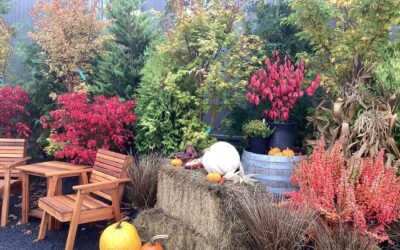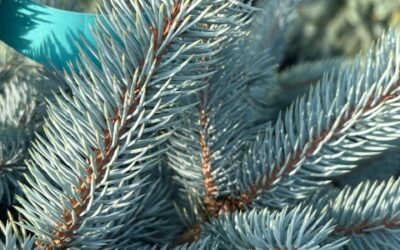If you’re searching for types of trees that can handle Oregon’s mild winters and damp springs, you’re in the right place. Forests cover less than 30% of the world’s land surface but make up 80% of our global biomass (Arbor Day Foundation), so every new planting helps support biodiversity. Below, you’ll find a curated list of 10 species known to thrive in Oregon. Good news, many are low-maintenance and can bring year-round beauty to your yard.
Explore the Top 10 Oregon Trees
1. Douglas Fir
One of the most iconic evergreens in Oregon, Douglas fir adapts well to varied soil conditions. You’ll get steady growth plus classic, cone-shaped foliage for a timeless, Northwestern look. Consistent watering (especially when young) keeps it robust. If you want to compare it to other conifers, consider checking out common tree species for more options.
2. Western Red Cedar
Known for its pleasantly aromatic wood, Western red cedar creates privacy and provides evergreen color all year. It prefers moist, well-drained soil and partial to full sun. Many homeowners use it for hedges or windbreaks, since it grows tall and dense.
3. Bigleaf Maple
This broadleaf deciduous tree boasts impressive, oversized leaves (up to a foot broad). In autumn, it shifts to vivid shades of gold and orange. If you appreciate bold fall color, Bigleaf maple is a reliable pick for any yard. For more on deciduous options, peek at deciduous tree species to find other leaf-dropping favorites.
4. Pacific Dogwood
A true stunner in spring, Pacific dogwood produces crisp white blossoms that liven up any landscape. It likes partial shade to full sun and a bit of space for airflow around its trunk. Dogwoods are often prized for their manageable height, typically capping out around 20 to 30 feet.
5. Oregon White Oak
This native oak has thick, lobed leaves and a rugged trunk. It can handle dry summers once established, though steady watering helps in the early years. You’ll spot its acorns in clusters come fall. Bonus: the Oregon white oak supports plenty of local wildlife with its shade and seeds.
6. Holly
Holly trees shine with glossy, spiky leaves that remain evergreen through winter. You’ll often see them producing bright red berries, a favorite of local birds. Make sure you prune in late winter or early spring to maintain their shape and encourage fresh, healthy foliage.
7. Redwood
The coast redwood (Sequoia sempervirens) is known as the tallest tree on Earth, reaching up to 350 feet in the wild (Garden Design). While you might not see that height in a backyard, it still adds a majestic element. Give it plenty of sun and room to spread out over time.
8. Giant Sequoia
Giant sequoias (Sequoiadendron giganteum) are the largest trees by volume and can live for thousands of years. They thrive with regular moisture and decent sunlight, though they’re somewhat tolerant of cooler climates. Planting one is a long-term legacy, with a thick trunk and conical shape that draws the eye from a distance.
9. Ginkgo Biloba
With uniquely fan-shaped leaves, Ginkgo biloba adds an ornamental and historical flourish, since it’s considered a living fossil. It turns a striking gold in autumn and tolerates both urban and rural environments. Plant it in full sun to partial shade, and enjoy its low susceptibility to pests.
10. Quince
For compact yards, quince is a space-saver that also yields tart, versatile fruit. Many choose it for its spring blooms and easy pruning requirements. You can transform its harvest into jellies, jams, or preserves. Keep the soil moist while young, then water regularly during dry spells.
Wrap-Up And Next Step
Each of these 10 stands out for its adaptability and charm, whether you want evergreen shade, fall color, or a backyard orchard. Pick one that fits your style, offer it steady water and sunshine, and you’ll reap the rewards for years to come. If you’re curious about more in-depth identification tips, visit tree species identification to sharpen your skills. Try your first planting soon, and watch your Oregon landscape flourish.





